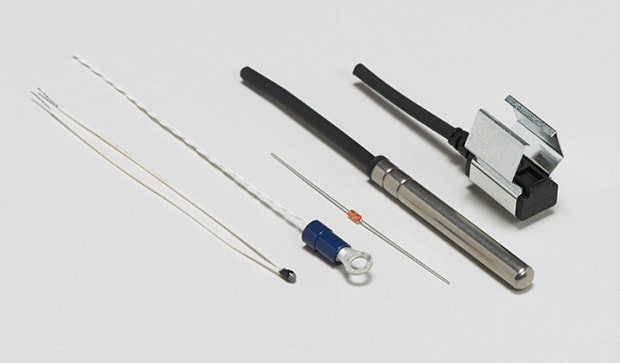How can I learn more about NTC thermistor accuracy including: Accuracy, Interchangeability, Beta Tolerance, Tolerance Comparison, Stability, Drift, and Moisture Induced Failure?
When designing the best temperature probe for a specific application, the process is a series of choices to meet your application requirements while juggling key parameters. Selecting the best temperature sensor is a critical part of the process. Download our application note to learn about each of these details. NTC Thermistor Sensor Performance
When designing an NTC thermistor, what are some of the testing considerations?
Thermistors are heat sensitive devices that are affected by all sources of heat energy. They are effected by ambient temperature, self-heat, conducted heat, thermal and solar radiation, etc. A proper test set up revolves around getting sufficient control of these effects, and quantifying or minimizing their influence. Download our application note to learn more. NTC Thermistor Testing Considerations
How are temperature sensors used in flow measurement applications?
NTC Thermistors are most often used in temperature measurements or control applications where the power is kept to a minimum to prevent self-heating error. However, a thermistor that is purposely self-heated significantly above ambient temperature can be used as a flow detector. For more details, download: NTC Thermistors for Gas Flow Measurement
How do I specify NTC thermistors in applications where the sensor is exposed to radiation?
Read the frequently asked questions associated with NTC thermistors and exposure to radiation.
NTC Performance in Environments with Radiation Exposure | FAQs



